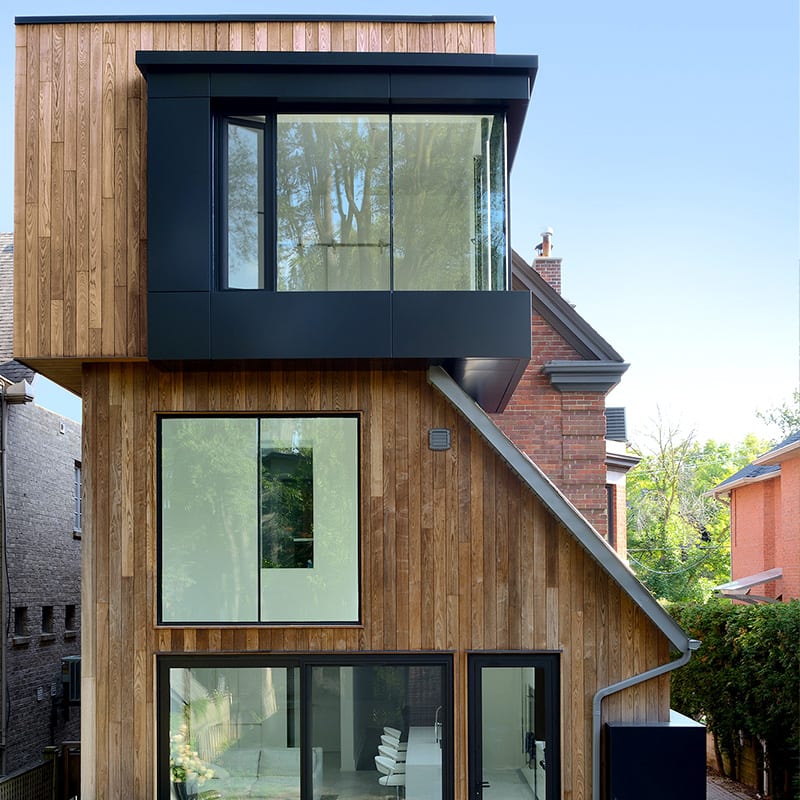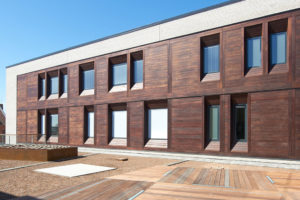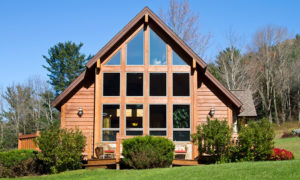A Quick Guide to Rainscreen Cladding

If you’re considering natural wood siding for your next project, it’s vital to include a rainscreen in your design. Rainscreens, along with surface treatments, protect your wood cladding from the elements, ensuring its longevity. Rainscreen wood siding systems have grown in popularity over the last few decades for their moisture management benefits and have continued to evolve, ensuring there are plenty of options depending on your preferences and installation needs.
Understanding Rainscreen Wood Siding
Rainscreen wood siding is a construction method where wood cladding serves as an exterior facade, coupled with a unique design that promotes moisture management. This approach not only protects the structure from water damage, it also adds a layer of thermal insulation.
Key Components of a Rainscreen System
A typical rainscreen system has four main components:
-
Cladding
Cladding, which is the most visually distinctive part, serves as the first line of defense against the elements. It is made from strong wood species like cedar, pine or hardwood to provide both aesthetic appeal and durability.
The wood used in rainscreen cladding is often treated or thermally modified to withstand harsh weather conditions to help ensure long-term stability. This layer also helps improve the building’s thermal efficiency by adding an extra insulation layer.
-
Fasteners
A popular fastener solution is a clip system, which securely attaches the wood cladding to the building’s structure. They also help create a consistent gap between the outer cladding and the inner layer to allow for proper airflow and moisture management. The design and placement of the clips are critical for the performance of the rainscreen wood siding system.
While a clip system is a well-known fastening option, furring strips are another great choice for cladding projects. With vertical and horizontal air vents that allow free airflow, these strips create a natural rain-screen system to prevent moisture build-up.
Some high-quality furring strips, like Quarrix strips, resist mold, mildew, splitting, warping and pest damage, making them a durable, consistent and long-lasting solution.
-
Air Cavity
The third part of the rainscreen system is the air cavity. It’s designed to let moisture escape and acts as a channel for draining any water that gets through the outer cladding. It also helps airflow to speed up the drying process.
This is important because it prevents rot and mold growth, which can cause serious structural damage over time. The size and design of the air cavity are crucial. It needs to be wide enough for good airflow, but not so big that it compromises the structure’s strength or looks.
-
Housewrap
The fourth component, known as housewrap, serves as a moisture barrier. It is typically made of a water-resistant material like a specialized membrane, and it plays a crucial role in maintaining the structural integrity of the building.
Acting as the final line of defense, it stops any moisture that has seeped through the outer cladding and air cavity. In addition to preventing water ingress, the moisture barrier also improves thermal insulation for energy efficiency.
Together, these elements create a breathable exterior that reduces the risk of mold and structural decay.
The Advantages of Rainscreen Wood Siding
Rainscreen systems were developed specifically for structures that need to withstand harsh weather, especially from moisture. The rainscreen improves a building’s appearance and lifespan by providing strong protection against the elements. Rainscreen systems manage water intrusion and prevent weather-related damage to help ensure the long-term structural integrity of the building.
Environmental Benefits
Wood is a sustainable and eco-friendly material that is often sourced from responsibly managed forests. Using wood in construction also contributes to carbon sequestration, as opposed to manufactured and refined structural building materials, which makes it a green choice for environmentally conscious projects.
Types of Wood Used in Rainscreen Systems

Various wood species, each with unique properties, are employed in rainscreen systems. These include cedar, pine and oak, among others. The choice depends on factors like climate compatibility, grain texture and natural durability.
Design and Aesthetic Considerations
Rainscreen wood siding offers an array of design and aesthetic options to suit any architectural style. From the natural charm of wood finishes to the bold statements of painted or stained surfaces, the choices are extensive and customizable:
- Natural Wood Finishes: Embrace the organic beauty of wood with finishes that highlight its natural grain and color.
- Painted or Stained Options: Opt for versatility with a range of colors and stains that allow for perfect coordination with your design palette.
- Textural Variations: Add visual interest and depth to your building’s exterior with different textures.
- Customizable Patterns: Tailor unique designs with customizable patterns that reflect your creative vision and enhance the building’s character.
By carefully selecting the right design elements, you can ensure that your rainscreen wood siding not only protects your structure but also elevates its aesthetic appeal.
Maintaining Rainscreen Wood Siding
Maintaining the integrity and appearance of wood rainscreen siding involves several key practices:
- Regular Inspections: Periodically inspect the siding for any signs of damage, such as cracks, warping or moisture retention.
- Cleaning: Gently clean the wood surface to remove dirt, debris and mildew. This helps preserve the wood’s natural look and prevent decay.
- Reapplying Treatments: Depending on the type of wood and exposure to elements, reapply stains or sealants every few years to enhance weather resistance and maintain aesthetic appeal.
- Addressing Repairs Promptly: Small issues like loose boards or minor damage should be fixed immediately to prevent larger problems.
Consistent maintenance ensures the rainscreen wood siding remains both functional and visually appealing over its lifespan.
Russin’s Rainscreen Wood Siding For Exceptional Exteriors

When you work with Russin, our experts can execute a rainscreen system that is perfect for your project. With the finishings, raw materials and fasteners needed to create a durable, long-lasting rainscreen, you can rely on Russin to help deliver a high-performing cladding solution suitable for various architectural needs.
We have rainscreen systems that offer durable wood cladding, ideal for challenging environments. It emphasizes robust protection against rot and decay to help ensure long-lasting performance.
Discover the elegance and resilience of Russin rainscreen wood siding for your home — our team is here to help you explore our wide range of options and help you find the perfect match for your architectural vision.
For a seamless combination of quality, style and sustainability, contact us today and speak with one of our experts about installing a rainscreen on your next project!

